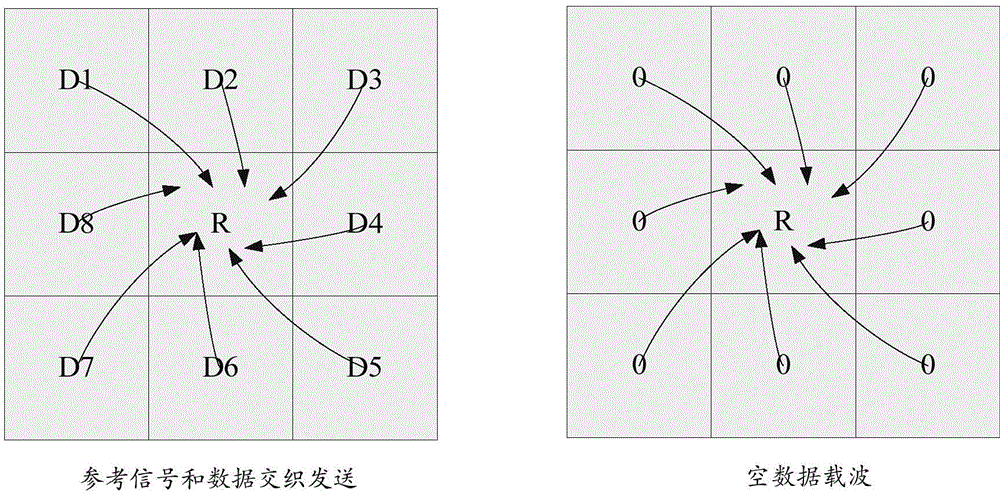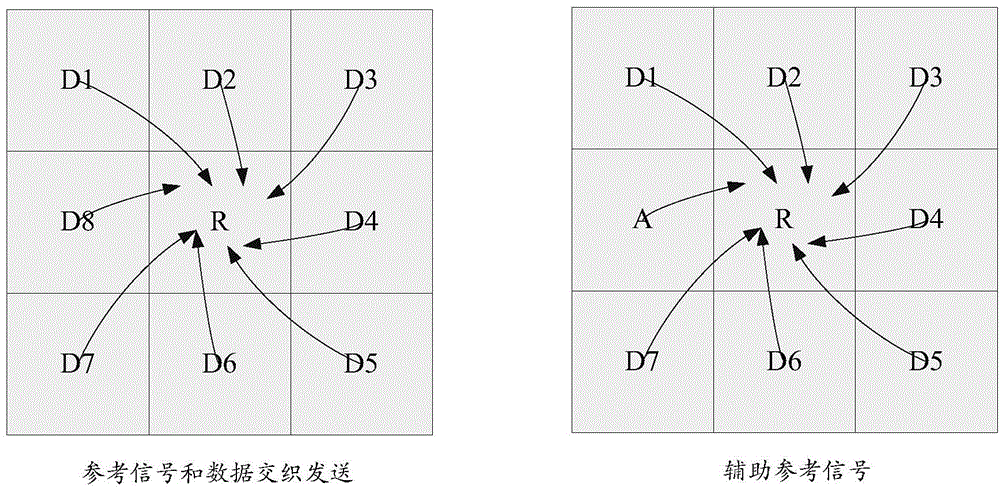Method and device for sending reference signal, and method and device for receiving reference signal
A technology for reference signal and reference transmission, applied in the directions of pilot signal allocation, wireless communication, transmission path sub-channel allocation, etc., can solve the problems of reduced system reliability and low efficiency, and achieve the effect of good channel estimation or synchronization performance
- Summary
- Abstract
- Description
- Claims
- Application Information
AI Technical Summary
Problems solved by technology
Method used
Image
Examples
Embodiment 1
[0097] In traditional wireless communication systems, Orthogonal Frequency Division Multiplexing (OFDM) has been widely used due to its simple implementation, ability to resist multipath fading, and high spectrum efficiency. For example, the third generation mobile communication partnership project ( The Long Term Evolution (LTE: Long Term Evolution) system corresponding to the Evolved Universal Terrestrial Radio Access (E-UTRA) protocol formulated by 3GPP: 3rd Generation Partnership Project). However, with the challenges of future mobile communications, some new non-orthogonal multi-carrier waveforms have gained more and more attention. Among them, filter bank based multi-carrier (FBMC) brings new possibilities for future wireless communication due to its highly time-frequency focused waveform. For example, FBMC uses a shaping filter to perform pulse shaping on the signal of each subcarrier, which enables FBMC to obtain good reception robustness under higher time-frequency er...
Embodiment 2
[0175] This embodiment describes how to apply the adjacent paired reference signal method to a wireless transmission system based on a frame structure, and this embodiment also describes how to implement multi-antenna channel estimation in an FBMC system.
[0176] Figure 4 It is a demodulation reference signal (DMRS: DemodulationReferenceSignal) pattern in an LTE system, wherein each frame includes 14 OFDM symbols, two antenna ports R7 and R8 use the same time-frequency resource, and pass the orthogonal code [1,1 ] and [1,-1] to distinguish.
[0177] Assuming that a system using FBMC waveforms uses the same frame structure and also needs to provide two orthogonal ports for channel estimation, the frame structure and reference signal patterns used can be Figure 5 and Figure 6 Two examples are shown. in, Figure 5 The reference signal pattern shown is a continuous reference signal pattern in time domain; Figure 6 The reference signal patterns shown are continuous refere...
Embodiment 3
[0196] This embodiment describes how to apply the adjacent paired reference signal method to synchronization pilots. In a communication system, initial time-frequency synchronization needs to be completed through a dedicated pilot sequence, for example, the initial synchronization of LTE is completed through a PSS / SSS sequence. Since LTE uses OFDM modulation, this allows PSS / SSS sequences to be easily interleaved into the data channel while avoiding any interference. If a system uses FBMC modulation, the synchronization sequence similar to PSS / SSS will be interfered by data signals on adjacent carriers, such as ( Figure 9 shown). Different from channel estimation, since the receiver has not obtained time and frequency synchronization information when receiving the synchronization pilot sequence, the receiver cannot obtain the pilot sequence in the frequency domain, and thus the receiver cannot predict the frequency domain signal as in the first embodiment. deal with. There...
PUM
 Login to View More
Login to View More Abstract
Description
Claims
Application Information
 Login to View More
Login to View More - R&D Engineer
- R&D Manager
- IP Professional
- Industry Leading Data Capabilities
- Powerful AI technology
- Patent DNA Extraction
Browse by: Latest US Patents, China's latest patents, Technical Efficacy Thesaurus, Application Domain, Technology Topic, Popular Technical Reports.
© 2024 PatSnap. All rights reserved.Legal|Privacy policy|Modern Slavery Act Transparency Statement|Sitemap|About US| Contact US: help@patsnap.com










